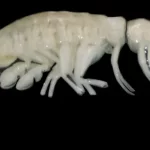
New Research Unveils Secrets to Boost Antibiotic Sensitivity
February 2, 2024In a significant stride towards unraveling the mysteries of bacterial behavior, groundbreaking research led by Columbia University’s biology professor, Lars Dietrich, has exposed a hidden facet of biofilm structure that could revolutionize our approach to combating antibiotic-resistant bacteria.
Decoding the Bacterial Enigma: Biofilms’ Hidden Symphony
Biofilms, often considered bacterial shields against antibiotics, are now proven to possess a highly structured arrangement, challenging the conventional belief in their random organization. The study, conducted by graduate student Hannah Dayton and published in the journal PLOS Biology, focused on the notorious pathogen Pseudomonas aeruginosa.
Microscopic Revelations: A Structured Ballet of Bacterial Defense
Employing advanced microscopy techniques, including scanning electron microscopy and fluorescence microscopy, the research uncovered a surprising revelation—the cells within P. aeruginosa biofilms exhibit a meticulously packed lengthwise arrangement perpendicular to their growth substrate. Mutations affecting the bacterial cell surface disrupted this ordered ballet.
Yin-Yang Dilemma of Biofilm Formation: Shield versus Starvation
“There’s a yin-yang trade-off for bacteria that form biofilms, since the biofilm guards against antibiotics and other threats, but also prevents food from entering and feeding the system,” explains Professor Lars Dietrich. This revelation opens doors to manipulating bacterial-cell arrangement to enhance susceptibility to antibiotics.
Sugar, Antibiotics, and Subzones: A Choreography of Sensitivity
Testing the effects of added sugar and antibiotics to fully formed biofilms, the researchers observed a nuanced dance within the microbial community. Mutant bacteria with disrupted cellular arrangements exhibited heightened responsiveness to added substances in specific subzones. The study illustrates how changes in biofilm anatomy influence metabolic activity and survival strategies within the bacterial community.
Implications for Antibiotic Strategies: A Ray of Hope
The structured arrangement of cells within biofilms, a previously underestimated aspect, now emerges as a potential lever to control bacterial physiological states. Professor Dietrich emphasizes, “This is a promising development for the pernicious and growing problem of antibiotic-resistant bacteria.” The findings suggest that understanding and manipulating biofilm microstructure could pave the way for more effective treatments against infections caused by biofilm-forming pathogens.
Collaborative Endeavors: Merging Expertise for Progress
The research represents a collaborative effort with the expertise of researchers from diverse fields, including Wei Min and Raju Tomer from Columbia University, Jasmine Nirody from the University of Chicago, and Anuradha Janakiraman from the City University of New York (CUNY).
In the complex realm of bacterial behavior, this breakthrough not only sheds light on the intricate choreography within biofilms but also holds the potential to choreograph a new era in antibiotic strategies. As we delve deeper into the microbial mysteries, this research stands as a beacon of hope in the fight against antibiotic resistance.
More information: Cellular arrangement impacts metabolic activity and antibiotic tolerance in Pseudomonas aeruginosa biofilms, PLoS Biology (2024). DOI: 10.1371/journal.pbio.3002205


















